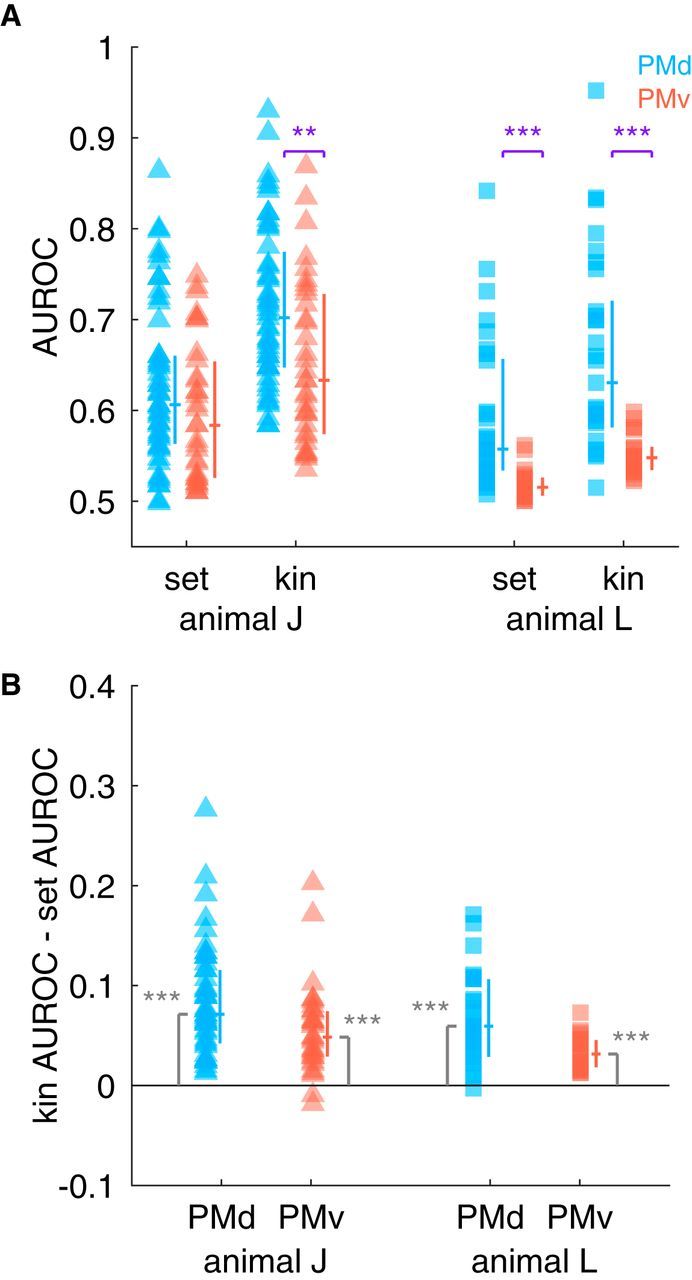Figure 6.

Encoding models that include kinematics predict spiking activity better than set-related models. A, We fit encoding models using either set-related activity or kinematics to each neuron in our sample and measured the AUROC across 10 folds of cross-validated data. Here, each point corresponds to the median AUROC across folds as a function of animal (triangles or squares) and model type. Cells in PMd are blue and cells in PMv are red. The vertical line next to each point set indicates the interquartile range; the median is indicated with the horizontal line. B, Distribution of differences between kinematic and set-related models. The lines to the immediate right of each point set follow the same conventions as in A. Kinematic models predicted spiking activity better than set-related activity models in PMd and PMv in both animals (significance codes: ***p < 0.0005, see main text for additional statistics).
